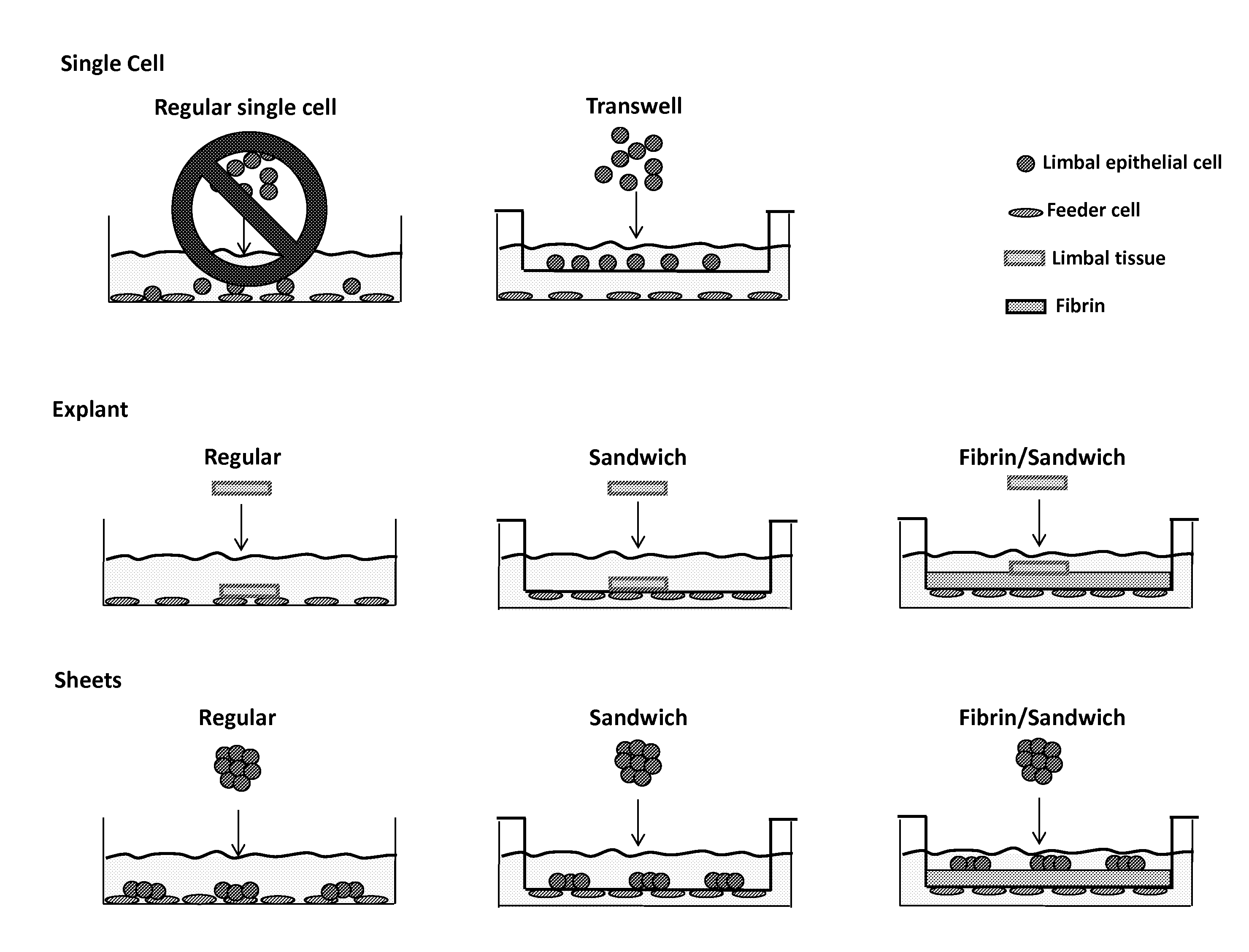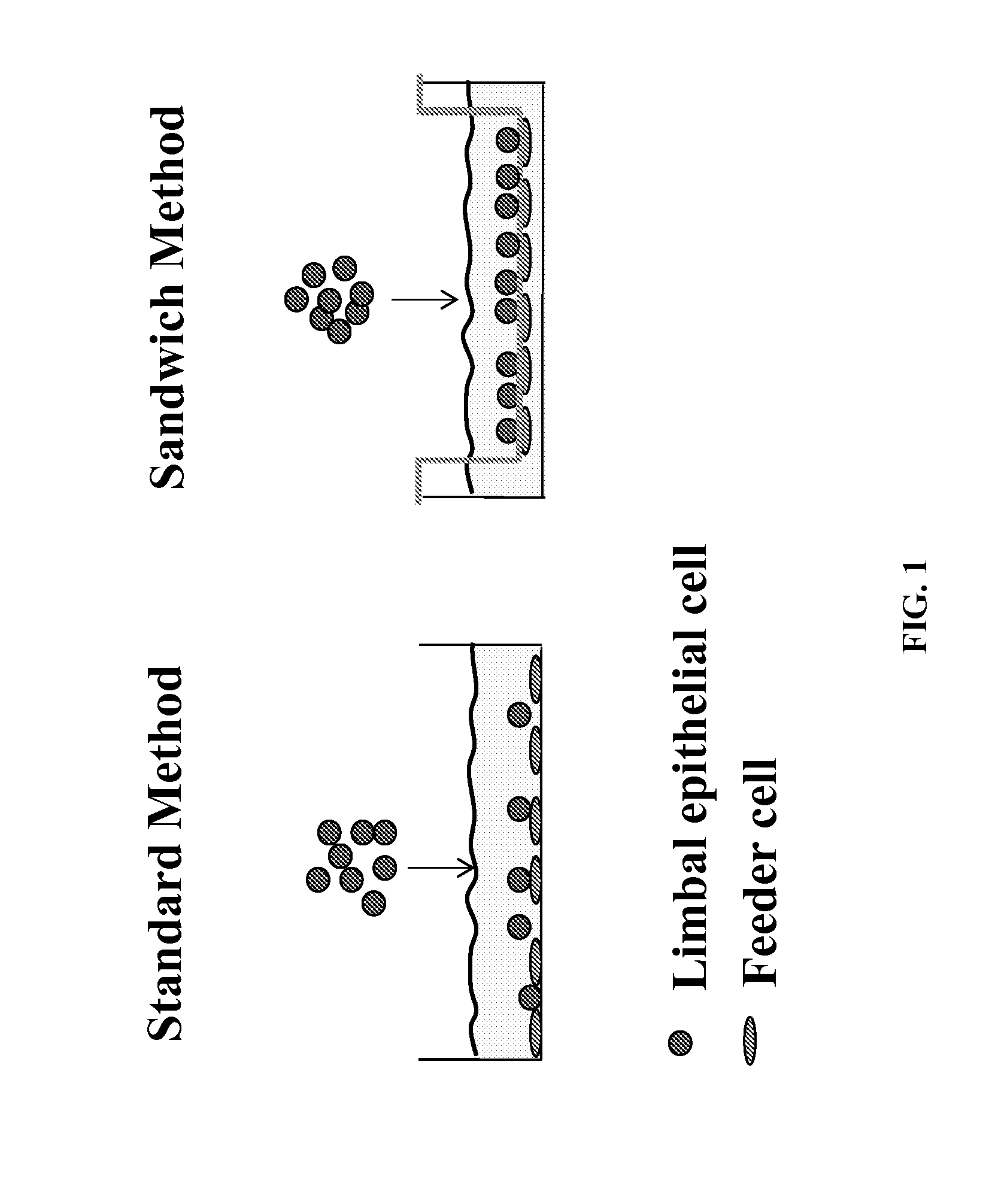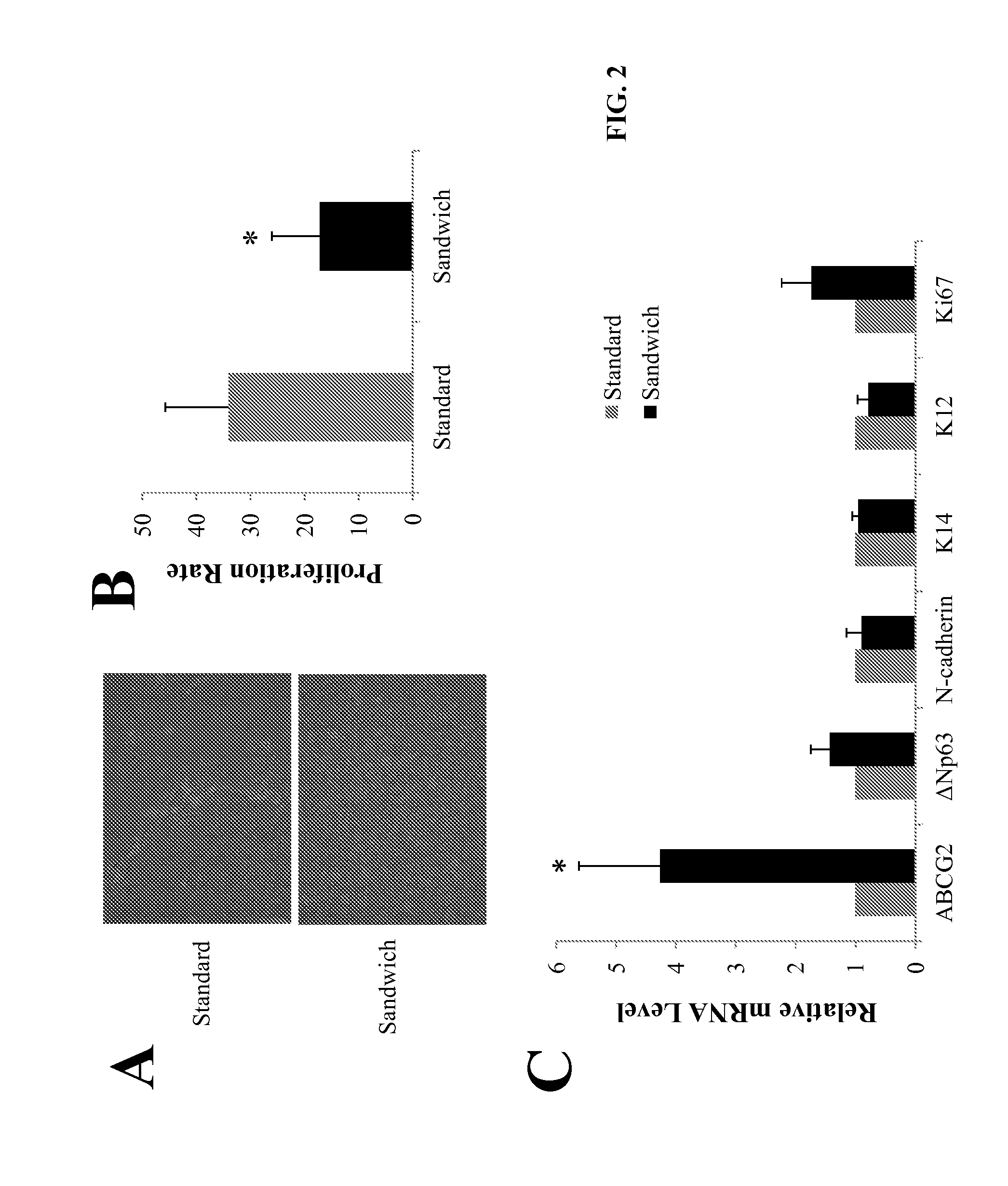Novel methods to regenerate human limbal stem cells
a corneal epithelial stem cell and human stem cell technology, applied in the field of systems and methods for cultivating corneal epithelial stem cells, can solve the problems of reducing the number of feeder cells in culture, insufficient supply of lscs nutrient supply, and possible contamination by murine feeder cells
- Summary
- Abstract
- Description
- Claims
- Application Information
AI Technical Summary
Benefits of technology
Problems solved by technology
Method used
Image
Examples
example 1
Illustrative Methods and Materials Useful with Embodiments of the Invention
Human Sclerocorneal Tissue
[0048]For the working examples disclosed herein, human sclerocorneal tissue was obtained from the Illinois Eye Bank (Watson Gailey, Bloomington, Ill.) and the Lions Eye Institute for Transplant and Research (Tampa, Fla.). Tissue donors ranged in age from 20 to 65 years. Experimentation on human tissue adhered to the tenets of the Declaration of Helsinki. The experimental protocol was evaluated and exempted by the University of California, Los Angeles Institutional Review Boards.
[0049]The tissues were preserved in Optisol (Chiron Ophthalmics, Inc., Irvine, Calif.), and the death-to-preservation time was less than 8 hours.
Preparation of Limbal Epithelial Cell Culture
[0050]Limbal epithelial cells were isolated from corneoscleral rims as previously described (see, e.g. Truong et al., Invest Ophthalmol Vis Sci. 52, 6315, 2011). In brief, the residual blood vessels, iris, endothelium, Teno...
example 2
Illustrative LSC Cultures
[0056]LSC Cultures Generated from Single-Cell Suspensions
[0057]LSCs generated from single-cell suspension cultured by the standard or sandwich method showed similar compact, cuboidal epithelial morphology (FIG. 2A). LSCs cultured by using the sandwich method had better stem cell phenotypes than did those cultured by using the standard method: the expression of ABCG2 was 2.8-fold greater in LSCs grown with the sandwich method (p<0.05), and the expression levels of other markers were comparable between LSCs obtained by either method (FIG. 2C).
LSC Cultures Generated from Cell Clusters
[0058]Cells derived from clusters cultures using standard (cluster standard method) or sandwich methods (cluster sandwich method) were compact and displayed a cuboidal, epithelial stem-cell morphology (FIG. 3A). The proliferation rates of cells obtained from cell clusters in the standard and sandwich cultures were greater than that of the control (i.e., a single-cell suspension cul...
example 3
Transdiffentiation of Human Limbal Stem Cells
[0065]The corneal epithelium is constantly renewed and maintained by the corneal epithelial stem cells, or limbal stem cells (LSCs) that are presumed to reside at the limbus, the junction between the cornea and conjunctiva. When the LSCs are deficient and unable to repopulate the corneal surface, the cornea surface can become opaque. Limbal stem cell deficiency (LSCD) has been recognized as one of the causes of significant visual loss and blindness (see, e.g. Dua et al., Indian J Ophthalmol 2000; 48:83-92; and Grueterich et al., Surv Ophthalmol 2003; 48:631-646.).
[0066]In patients who have LSCD restricted to one eye, a small biopsy can be obtained from the healthy eye and autologous LSCs from this biopsy can be expanded ex vivo using mouse 3T3 cells as feeder cells (see, e.g. Rama et al., N Engl J Med 2010; 363:147-155). Transplantation of these autologous LSCs onto the diseased eye has successfully reconstructed a transparent ocular surf...
PUM
| Property | Measurement | Unit |
|---|---|---|
| size | aaaaa | aaaaa |
| distance | aaaaa | aaaaa |
| time | aaaaa | aaaaa |
Abstract
Description
Claims
Application Information
 Login to View More
Login to View More - R&D
- Intellectual Property
- Life Sciences
- Materials
- Tech Scout
- Unparalleled Data Quality
- Higher Quality Content
- 60% Fewer Hallucinations
Browse by: Latest US Patents, China's latest patents, Technical Efficacy Thesaurus, Application Domain, Technology Topic, Popular Technical Reports.
© 2025 PatSnap. All rights reserved.Legal|Privacy policy|Modern Slavery Act Transparency Statement|Sitemap|About US| Contact US: help@patsnap.com



